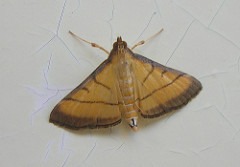
GM/Biotech Crops Report – November 2018
5th November 2018- GM/Biotech Crops Monthly Reports (BELOW) form part of BCPC’s free three-tier Biotech Crops Info service.
- This service also includes a weekly round-up of news from around the globe – see BCPC Newslink GM Crops section.
- Plus – Free access database on over 300 GM/biotech products covering 23 crops in the global market visit BCPC’s GM/Biotech Crops Manual – Register here for free access.
Already registered? Click here
GM/Biotech Crops Monthly Report November 2018
 |
New crop plant |
|---|---|
| More oil in Biofuel crops Oil content of plant cells is regulated by a sugar-signalling molecule and by engineering plants to have higher sugar content, oil content is also increased adding to the calorific value of biofuel crops. More Pic: Ariaf Anante |
 |
 |
More productive maize Engineering maize to have higher levels of rubisco leads to more efficient CO2 capture but also has the benefit of conferring greater tolerance of heat and drought. More Pic: Jinjian Liang |
| Gene gun used on wheat Wheat does not grow well in tissue culture, making genetic improvements difficult but researchers in Japan have used a gene gun for transient expression of CRISPR-Cas9 modifications in mature wheat embryos with a 5% success rate. More Pic: Alexander Olm |
 |
 |
Improved rice yields Tiller numbers in rice are affected by the levels of the OsAAP3 gene and knocking out this gene using CRISPR-Cas9 editing can boost yield and improve nitrogen use efficiency if plants are grown in suitably fertile conditions. More Pic: Audrey Law |
| Mosquitoes beware Scientists at Imperial College, London have eradicated a caged population of mosquitoes by switching off the genes that cause eggs to develop into female mosquitoes. With males carrying the heritable modification it quickly spread throughout the population and by 7 – 11 generations no females were produced. More Pic:Dept Foreign Affairs & Trade |
 |
 |
Gene editing is OK While the European Court of Justice has ruled that gene-edited plants should be subject to the same strict rules as GM plants, DEFRA minister George Eustice has stated that the UK disagrees with this ruling and says that gene-editing is merely an extension of traditional breeding techniques provided that no foreign DNA is involved. More Pic: George Eustice |
| Blue roses Blue roses are currently produced by florists dying white roses but now geneticists have spliced some enzymes from bacteria into the rose genome where they convert the already present L –glutamine into a blue pigment to produce naturally blue roses. More Picf: Tanakawho |
 |
 |
It’s growth Jim |
|---|---|
| Multiple insect resistance in rice The genes CRY1Ab and Vip3a are two different genes that confer insect resistance. Now researchers have developed rice that expresses a fusion protein of both these genes in the hope that this double resistance will lessen the risk of resistance developing in the target insects. This rice is resistant to both Asiatic rice borer and rice leaf roller More Pic: John_amend_all2000 |
 |
THE LATEST ADDITIONS TO THE GM/BIOTECH DATABASE ARE:
-
- MON88702 – maize with hemipteran insect resistance approved for food use in Australia, New Zealand and America.
- VCO-01981-5 – maize with glyphosate tolerance approved for food use in South Korea.
- 81910 – cotton with tolerance of 2,4-D and glufosinate approved for commercialisation of food, feed and environmental use in Brazil and for food and feed use in Japan.
- MZIR098 – maize with tolerance of glufosinate and multiple insect resistance including Coleopterans approved for food and feed use in Brazil.
- A2704-12 – soybean with tolerance of glufosinate approved for food and feed use in Nigeria.
- DP 356043 – soybean with tolerance of glufosinate and sulfonyl urea herbicides approved for food and feed use in Nigeria.
- A5547-127 – soybean with tolerance of glufosinate approved for food and feed use in Nigeria.
- MON87708 – soybean with tolerance of glyphosate and dicamba approved for food and feed use in Nigeria.
- FG72 – soybean with tolerance of glyphosate and isoxaflutole herbicides approved for food and feed use in Nigeria.
FOR INSTANT ACCESS TO GM BIOTECH MANUAL CLICK HERE (Registration required)
Already Registered? Click here to access

